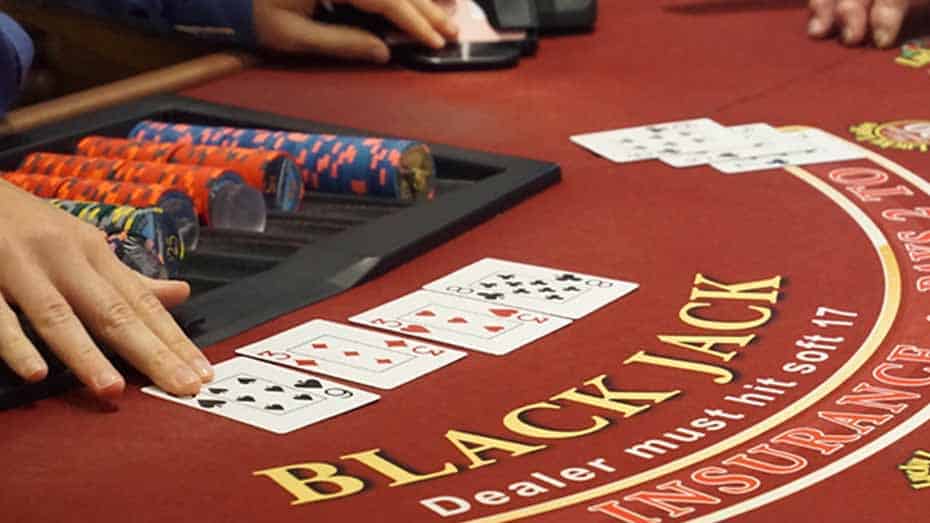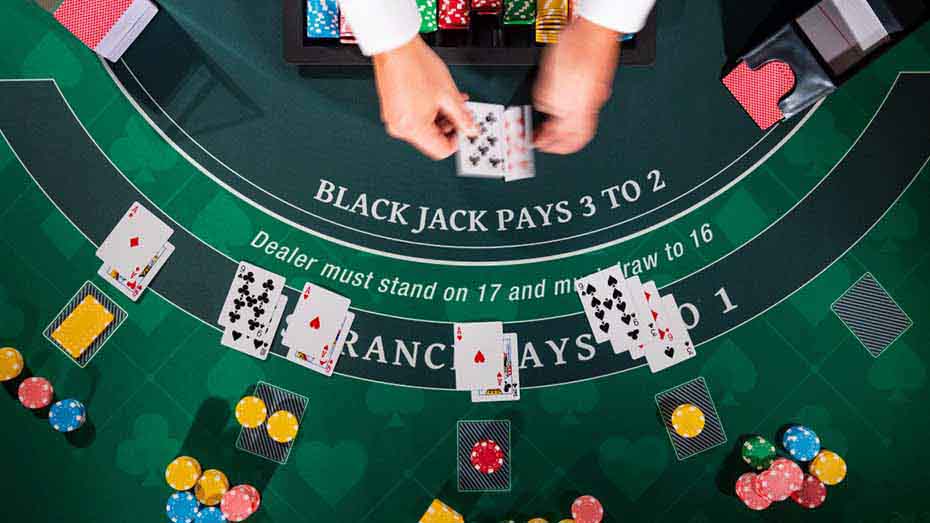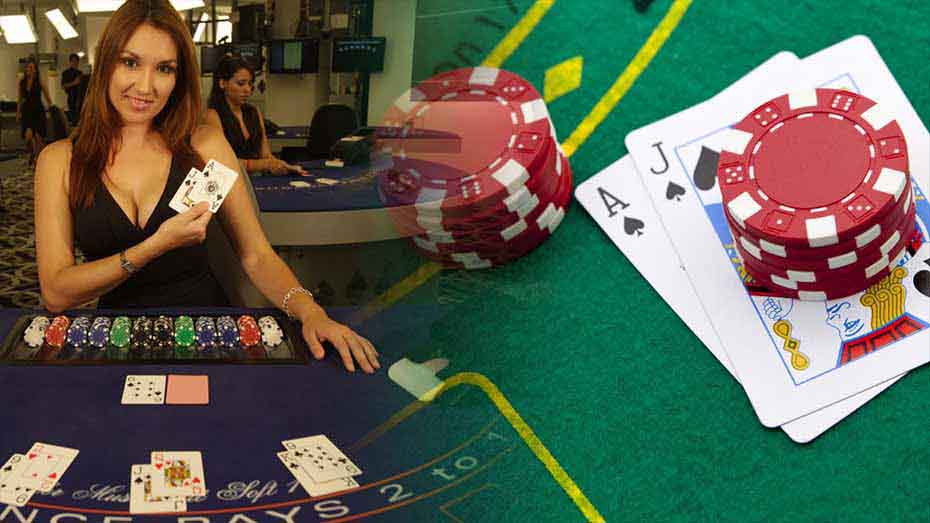Mastering Blackjack Card Counting: A Comprehensive Guide
Blackjack card counting is a strategic technique employed by skilled players to gain an advantage in the popular casino card game in Lodigame, Blackjack. This method involves keeping track of the cards that have been dealt from the deck and adjusting your bets and gameplay based on the remaining cards. While it’s not a guaranteed way to win, card counting can significantly improve your odds of success in the game. In this comprehensive guide, we delve into the fascinating world of blackjack card counting, exploring the strategies, principles, and secrets that can turn an ordinary player into a skilled advantage gambler.

The Basics of Card Counting
Card counting is at the heart of gaining an advantage in Blackjack. Understanding the fundamentals of card counting is crucial for anyone looking to employ this strategy effectively. Here, we’ll delve deeper into the key concepts and techniques that form the foundation of card counting.

Card Values
In card counting, each card in the deck is assigned a point value. The most commonly used values are:
- High cards (10s, face cards, and Aces): These are assigned a value of -1.
- Low cards (2 through 6): These are assigned a value of +1.
- Neutral cards (7 through 9): These are assigned a value of 0.
The Hi-Lo Card Counting System
The Hi-Lo system is one of the most widely used and simplest card counting methods.
- Running Count: This is the count of the cards as they are dealt. Players start with a running count of 0.
- True Count: To account for the number of decks remaining in the shoe, players convert the running count into a true count. The formula is dividing the running count by the number of decks remaining.
Keeping the Count
To successfully count cards, you must maintain an accurate count while playing. This requires keen observation and mental calculation. Players typically keep the count by adding and subtracting values as cards are dealt. Speed and accuracy in counting are essential to avoid drawing attention from casino staff.
Betting Adjustments
Card counting isn’t just about keeping track of the cards; it also involves adjusting your bets based on the count. When the true count is in your favor (positive), you should increase your bets. Conversely, when the true count is against you (negative), you should decrease your bets or even sit out a few hands.
Basic Strategy and Card Counting
Maximizing the effectiveness of card counting in Blackjack is achieved by integrating it with the fundamental Blackjack strategy. The basic strategy provides the optimal decisions for hitting, standing, doubling down, and splitting, while card counting helps you determine when to deviate from the basic strategy based on the count.
Blackjack Card Counting Strategies
While understanding the basics of card counting is crucial, implementing a well-defined card counting strategy is what sets successful players apart from novices. In this section, we’ll explore various card-counting strategies and delve into the practical aspects of using them effectively. Here is the Hi-Lo step-by-step guide:

- Assigning Values: Begin by assigning point values to each card as they are dealt according to the Hi-Lo system.
- Starting Count: The starting count is usually 0, and you’ll maintain this count as cards are dealt.
- Running Count: Continuously update the count as each card is revealed, adding and subtracting the appropriate values.
- Calculating the True Count: Determine the true count by dividing the running count by the number of decks remaining.
- Betting Adjustments: Modify your bets based on the true count, increasing them when it’s positive and reducing them when it’s negative.
- Basic Strategy Integration: Combine your true count information with basic Blackjack strategy to make optimal decisions on when to hit, stand, double down, or split.
Other Popular Card Counting Systems
While the Hi-Lo system is one of the most well-known and widely used card counting methods, there are several other systems that card counters may employ. Each system has its own unique characteristics and complexities, making it essential to understand the options available. Here, we’ll explore a few other popular card counting systems:
KO (Knock-Out) System
The KO system is a simplified card counting strategy that appeals to both beginners and experienced players looking for a more straightforward approach. It eliminates the need to calculate the true count, which can be a stumbling block for some. Here are the key features of KO System:
- Card Values: In the KO system, you assign point values to cards as follows:
- 2 through 7: +1
- 8s and 9s: 0
- 10s, face cards, and Aces: -1
- Starting Count: The KO system often starts with a count of 0, like the Hi-Lo system.
- No True Count Calculation: Unlike the Hi-Lo system, you don’t need to calculate the true count. You simply maintain the running count.
- Betting Adjustments: Similar to the Hi-Lo system, you adjust your bets based on the running count. Increase your bets when the count is positive and decrease them when it’s negative.
- Simplicity: The KO system’s simplicity is its main advantage. It’s easier for newcomers to grasp, making it an excellent choice for those new to card counting.
Omega II System
The Omega II system is a more complex card counting strategy that offers increased accuracy but requires greater mental effort. It assigns different point values to cards, including 2s and Aces, providing a more refined assessment of the remaining deck composition. Here are the key Features of the Omega II System:
- Card Values: The Omega II system assigns point values as follows:
- 2, 3, and 7: +1
- 4, 5, and 6: +2
- 8 and Aces: 0
- 9: -1
- 10s and face cards: -2
- Starting Count: The Omega II system often starts with a count of 0.
- Calculating True Count: You still calculate the true count by dividing the running count by the number of decks remaining.
- Greater Accuracy: The Omega II system offers a more precise assessment of deck composition compared to simpler systems.
- Increased Complexity: Due to its more intricate counting process, the Omega II system may require more practice and experience to use effectively.
Red 7 Count
The Red 7 Count is a card counting strategy that adds an extra layer of complexity to traditional systems. Developed by Arnold Snyder, it is designed to improve the accuracy of betting and playing decisions.
Key Features of the Red 7 Count:
- Card Values: In the Red 7 Count, card values are assigned as follows:
- 2, 3, 4, 5, 6: +1
- 7s: +0.5 (hence the name “Red 7”)
- 8s and 9s: 0
- 10s, face cards, and Aces: -1
- Starting Count: Like most systems, you begin with a count of 0.
- Calculating True Count: To calculate the true count, divide the running count by the estimated number of decks remaining.
- Betting Adjustments: Adjust your bets based on the true count, increasing them when it’s positive and reducing them when it’s negative.
- Complexity: The Red 7 Count’s unique fractional card values add complexity but also precision to your counting strategy.
Hi-Opt I and Hi-Opt II Systems
The Hi-Opt I and Hi-Opt II systems are more advanced card counting strategies that assign varying point values to cards. They are considered more accurate than simpler systems but require a higher level of skill and concentration.
Key Features of the Hi-Opt I and Hi-Opt II Systems:
- Card Values: Both Hi-Opt systems assign different values to cards. Hi-Opt I has more straightforward values, while Hi-Opt II incorporates fractional values for greater accuracy.
- Hi-Opt I:
- 2 through 7: +1
- 8s and 9s: 0
- 10s, face cards, and Aces: -1
- Hi-Opt II:
- 2s: +1
- 3s, 4s, 5s, and 6s: +2
- 7s, 8s, and 9s: +0.5
- 10s, face cards, and Aces: -2
- Hi-Opt I:
- Starting Count: Typically, you start with a count of 0 in both systems.
- Calculating True Count: True counts are calculated by dividing the running count by the number of decks remaining.
- Precision: The Hi-Opt I and Hi-Opt II systems offer more precise assessments of deck composition compared to simpler systems like Hi-Lo or KO.
Betting Strategies
In Blackjack card counting, mastering the art of betting is as crucial as maintaining an accurate count. Effective betting strategies help maximize your advantage when the cards are in your favor and minimize losses when they are not. Here, we’ll delve deeper into the various aspects of betting strategies in the context of card counting.

Bet Sizing and Spreading
The core principle behind bet sizing is to increase your bets when the true count is in your favor (positive) and decrease them when it’s not (negative). This allows you to capitalize on your advantage and minimize losses.
Develop a betting unit system based on your bankroll. A common rule of thumb is to bet 1-2% of your total bankroll as your standard bet. For example, if your bankroll is $10,000, your standard bet would be $100 to $200.
Spreading refers to the range of bets you use based on the true count. A common spread might be 1 to 5 units. For instance, if your standard bet is $100, your minimum bet would be $100 when the count is negative, and your maximum bet would be $500 when the count is strongly positive.
Risk Management
Understand your own risk tolerance and comfort level with betting. High spread betting can lead to significant wins, but it also carries a higher risk of substantial losses. Be cautious and stick to a strategy that aligns with your risk tolerance.
Card counting isn’t a guaranteed win; it merely shifts the odds in your favor. To manage risk effectively, establish loss limits and walk away from the table if you reach them. Maintaining the integrity of your bankroll is paramount for achieving sustained success over the long term.
Understanding Variance
Variance refers to the natural fluctuations in your bankroll that occur during Blackjack play, even when using optimal strategies. Card counting reduces the house edge but doesn’t eliminate variance.
Understand that in the short term, luck can play a significant role, and you may experience losing streaks despite employing the best strategies. Focus on the long-term positive expectation that card counting provides.
Bankroll Management for Card Counters
Your bankroll is your lifeline in Blackjack. It’s essential to have a sufficient bankroll to withstand losing streaks and continue betting when the odds are in your favor. A larger bankroll allows for more flexibility in bet sizing.
The risk of ruin is the likelihood of losing your entire bankroll. Card counters often use risk of ruin calculations to determine the likelihood of going broke based on their betting strategies and bankroll size.
Stick to your predetermined bankroll management plan, even during emotional swings in the game. Discipline is a card counter’s greatest ally.
Common Mistakes to Avoid
While card counting can be a powerful strategy to gain an edge in Blackjack, it’s also fraught with pitfalls for the unwary. Here, we’ll explore some of the most common mistakes made by aspiring card counters and provide guidance on how to avoid them.

Overbetting
One of the most prevalent mistakes among novice card counters is overbetting when the count is in their favor. This can lead to substantial losses when the count turns against them. How to Avoid Overbetting:
- Stick to your predetermined bet spread based on the true count. Deviating from this plan can result in significant financial setbacks.
- Maintain discipline and don’t let greed dictate your bets. Remember that card counting is about long-term advantage, not quick riches.
Ignoring Basic Strategy
Card counting should complement, not replace, basic Blackjack strategy. Ignoring basic strategy can lead to suboptimal decisions and erode your advantage. How to Avoid Ignoring Basic Strategy:
- Ensure you have a solid understanding of basic strategy before incorporating card counting into your gameplay.
- Don’t deviate from basic strategy based solely on the count. Card counting should inform your decisions when to deviate from basic strategy, not replace it entirely.
Failing to Adapt to Changing Conditions
Card counting effectiveness can vary based on the specific Blackjack game, deck penetration, and Casino rules. Failing to adapt to changing conditions can lead to missed opportunities or excessive risk. How to Avoid Failing to Adapt:
- Always be aware of the specific rules and conditions of the Blackjack game you’re playing.
- Adjust your betting and playing strategy based on the number of decks, penetration, and other game-specific factors.
Becoming Too Conspicuous
Drawing attention to your card counting activities is a surefire way to invite unwanted scrutiny from casino staff. Becoming too conspicuous can result in being asked to leave or barred from playing. How to Avoid Becoming Too Conspicuous:
- Maintain a low profile at the table. Avoid making dramatic changes in your bets or behavior.
- Use camouflage techniques like varying your bet sizes, taking occasional breaks, and engaging in casual conversation with other players to divert attention.
Neglecting Emotional Control
Card counting can be mentally taxing, and emotions can run high during losing streaks. Failing to maintain emotional control can lead to impulsive decisions and mistakes. How to Avoid Neglecting Emotional Control:
- Practice emotional discipline. If you find yourself becoming frustrated or anxious, take a break from the game.
- Remember that variance is a natural part of gambling, and individual sessions may not always go your way. Focus on the long-term advantage card counting provides.
FAQs
Conclusion
In summary, mastering Blackjack card counting can significantly improve your odds in the game, but it demands a deep understanding of card values, a chosen counting system, and disciplined betting strategies. Avoiding common mistakes and maintaining emotional control are essential. Ultimately, it’s a long-term strategy that, when combined with basic Blackjack skills, can turn you into a skilled advantage player.



















